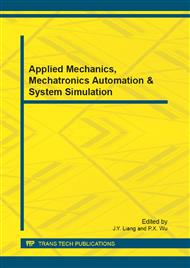p.1167
p.1174
p.1179
p.1184
p.1190
p.1196
p.1202
p.1208
p.1212
A Brightness and Color Correction Method of LED Display Based on CCD Camera
Abstract:
The correction methods of LED displays are aiming to address the uniform issues which includes brightness aspect and color aspect. The correction method use a 3×3 correction coefficients matrix to reshape the pulse width of each LED.To calculate the correction coefficients, a linear system is established, which includes a color CCD and a LED display. And a correction algorithm is introduced based on the color CCD. This algorithm describes the relationships of the main color components of a LED, when the gray level of a LED is increasing or decreasing, the three main color components would change according to the correction coefficients. The results shows that the correction based on this algorithm improved the performance of LED displays.
Info:
Periodical:
Pages:
1190-1195
Citation:
Online since:
September 2012
Authors:
Keywords:
Price:
Сopyright:
© 2012 Trans Tech Publications Ltd. All Rights Reserved
Share:
Citation:


